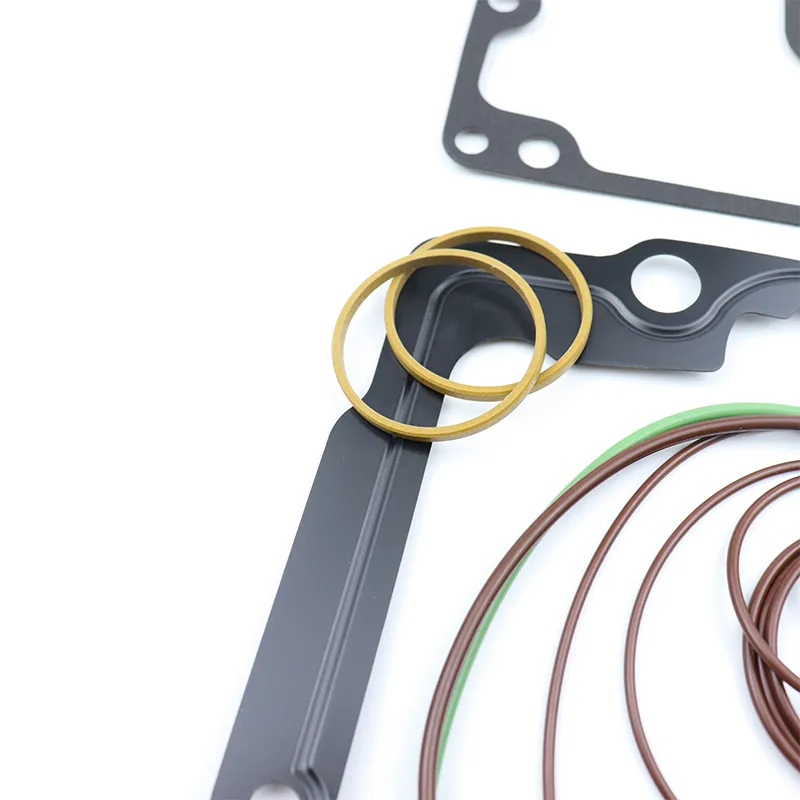វិច្ឆិកា . 30, 2024 18:30 Back to list
Excavator Boom Cylinder Seal Change Guide for Efficient Performance and Maintenance
Excavator Boom Cylinder Seal Replacement A Comprehensive Guide
Excavators are vital machines in construction, mining, and various industrial applications. Their performance hinges on the integrity of their hydraulic systems, particularly the boom cylinder seals. These seals prevent hydraulic fluid leaks and ensure smooth operation of the boom. Over time, exposure to harsh conditions, wear, and degradation can compromise seal integrity, necessitating timely replacement. This article provides a detailed guide on how to replace the seals in an excavator boom cylinder, helping operators maintain optimal performance.
Understanding Boom Cylinder Seals
The boom cylinder is one of the critical components of an excavator, allowing the boom to lift and lower loads effectively. It consists of a cylinder barrel, piston, and, importantly, several seals designed to contain hydraulic fluid within the cylinder. Common types of seals found in boom cylinders include O-rings, lip seals, and backup rings. Each plays an essential role in preventing leaks and sustaining pressure as the boom operates.
Signs that Seal Replacement is Needed
Before diving into the replacement process, it’s crucial to recognize when a seal replacement is necessary. Here are some telltale signs
1. Hydraulic Fluid Leaks One of the most obvious symptoms of a failing seal is hydraulic fluid leaking from the cylinder. 2. Altered Boom Performance If the boom operates sluggishly or fails to hold its position, it might indicate worn seals. 3. Increased Hydraulic Fluid Consumption A sudden increase in hydraulic fluid levels may suggest a leak caused by seal deterioration.
Preparing for the Replacement
Before beginning the seal replacement process, gather the necessary tools and materials. You’ll need
- A hydraulic seal kit specific to your excavator model - Basic hand tools (wrenches, screwdrivers, etc.) - A torque wrench - Clean rags or paper towels - Hydraulic jack or lifting equipment - Safety gear (gloves, goggles, etc.)
Step-by-Step Replacement Process
1. Safety First Ensure the excavator is on a level surface, the engine is off, and the hydraulic system is depressurized. Always wear appropriate safety gear.
excavator boom cylinder seal replacement

2. Accessing the Boom Cylinder Start by removing any attachments or components that obstruct access to the boom cylinder. This may involve disconnecting hoses or removing guards.
3. Remove the Boom Cylinder Secure the boom and use a hydraulic jack to support it. Detach the cylinder from the boom and the excavator frame. Carefully lower it to a maintenance area.
4. Disassemble the Cylinder With the cylinder removed, take it to a clean workspace. Remove the end cap using the appropriate tools. Be cautious not to damage the cylinder during this process.
5. Extract Old Seals Carefully remove the old seals with a seal removal tool. Ensure that no debris or old seal material remains in the groove.
6. Clean the Cylinder Use clean rags to wipe down the cylinder surfaces. Inspect for scratches or damage that might affect the new seals' performance. If necessary, polish the surface with a fine-grit sandpaper.
7. Install New Seals Begin installing the new seals from the hydraulic seal kit. Start with the largest seal and work your way to the smaller ones. Ensure they are seated correctly in their grooves to prevent leaks.
8. Reassemble the Boom Cylinder After installing all seals, replace the end cap and ensure it is torqued to the manufacturer's specifications. This is crucial for maintaining hydraulic integrity.
9. Reinstall the Boom Cylinder Lift the cylinder back to its original position and secure it to the boom and frame. Reconnect any hydraulic hoses, ensuring no kinks or bends in the lines.
10. Testing Once everything is reassembled, turn on the hydraulic system and engage the boom. Observe for any leaks and test the full range of motion to ensure proper operation.
Conclusion
Replacing the seals in an excavator boom cylinder is a critical maintenance task that can enhance the machine's performance and prolong its service life. By following this guide, operators can effectively manage their excavator's hydraulic systems, reducing downtime and avoiding costly repairs. Always consult the manufacturer's manual for specific instructions related to your excavator model to ensure proper procedures are followed. Regular maintenance and timely seal replacements can lead to a more efficient and reliable excavator on the job site.
-
Wiper Oil Seal: Our Commitment to Clean Hydraulics
NewsAug.13,2025
-
Hydraulic Oil Seal for Self Discharging Cars
NewsAug.13,2025
-
Hub Oil Seal for Agricultural Tractor Hubs
NewsAug.13,2025
-
Skeleton Oil Seal with NBR Material
NewsAug.13,2025
-
Rotary Lip Seal for High Pressure Applications
NewsAug.13,2025
-
Cylinder Seal Kits Our Legacy of Hydraulic Trust
NewsAug.13,2025
-
Unlocking the Potential of Hydraulic Systems with Essential Sealing Solutions
NewsAug.06,2025
Products categories
















